We’ve made the itinerary for your mid-century summer road trip so you don’t have to.
By Annette Maxon
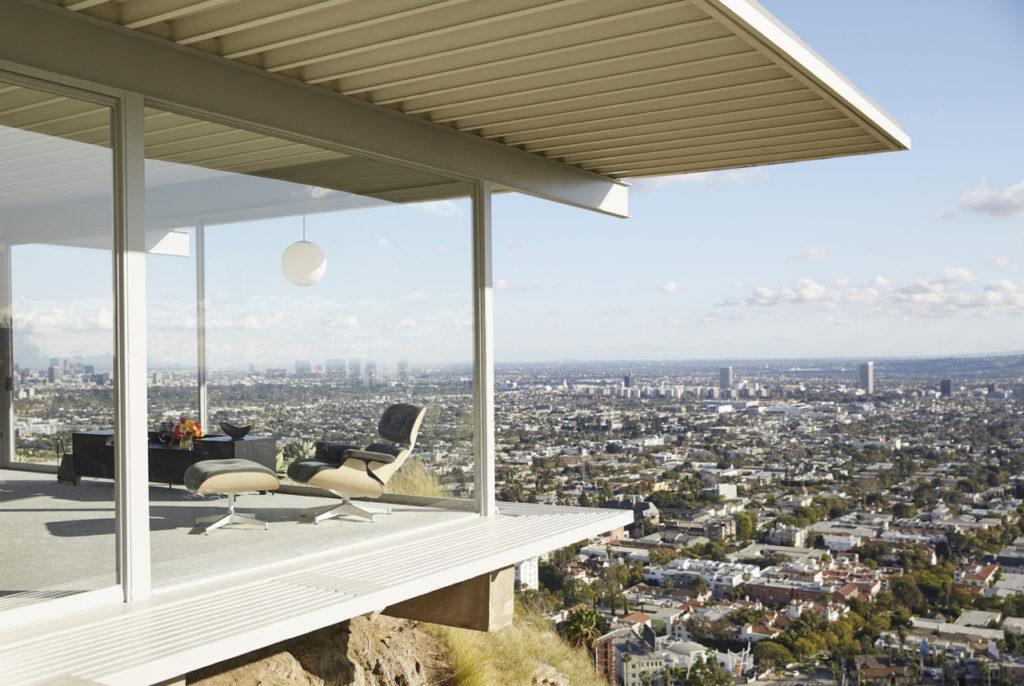
Summer travel looks a little different this year. That’s why we’ve made the ultimate design road trip itinerary with checkpoints at some of the world’s most iconic mid-century modern homes. Following down the west coast, stop by 20th-century marvels that disappear into their natural surroundings, show off their sharp angles, and changed the course of modern architecture. From Seattle’s renovated Seward Park Home to Frey House II in Palm Springs, California, hop in your car and explore 1,300 miles of architecture with mid-century design as your guide.
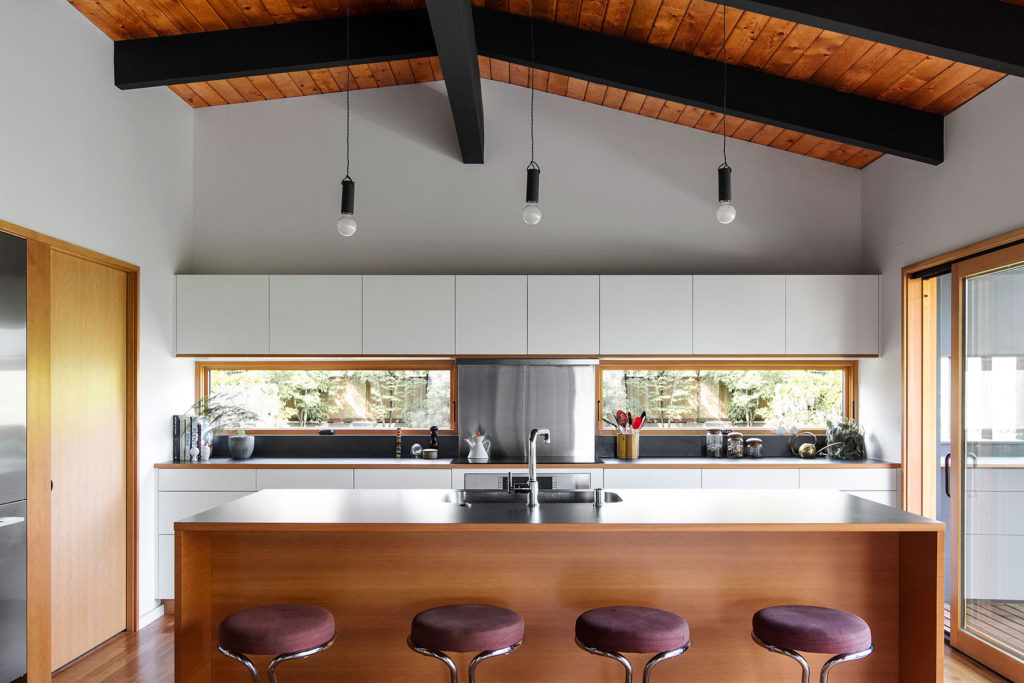
Seward Park Home Seattle, WA
While the allure of mid-century modern homes has reigned for decades, the structures themselves weren’t all built to last. Thankfully, this dilapidated 1961 George Lucker-designed home was given a second life when Seattle-based SHED Architects resuscitated it into the 21st century. Guided by the home’s original footprint, SHED opened the living spaces, allowing light from the new backyard deck to brighten the home. Instead of eliminating traces of Lucker’s original mid-century design, SHED blended contemporary appliances with the home’s colored plastic laminate and red oak flooring, and vertical grain fir cabinets. Not all mid-century remodels are done well, so hats off to SHED for this spectacular project. Don’t believe us? See it for yourself. Distance viewing only.
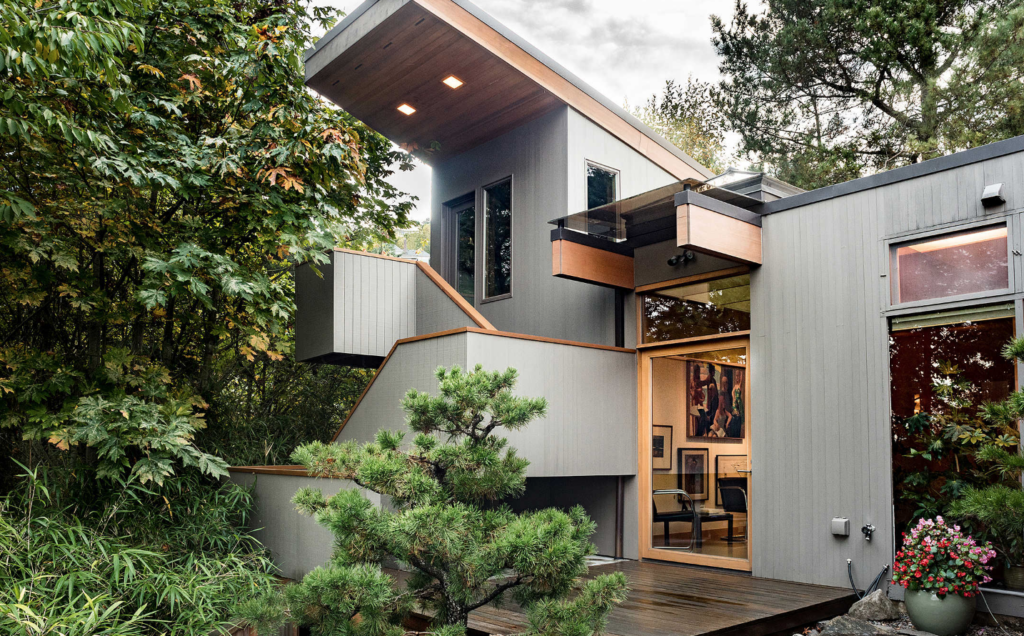
Burkes-Belluschi House Portland, OR
Some things are too good to give up, and Portland’s Burkes-Belluschi House is no exception. In the late 1940s, Pacific Northwest architect Peter Belluschi imagined the 2,500-square-foot Portland home for the Burkes family. Designed to capture sweeping views of the city (as seen from the home’s floor-to-ceiling windows) and bring warm wood accents into the kitchen and bedrooms, it is no surprise Belluschi bought back house for his own family 25 years later. Taking a cue from the home’s nature-filled surroundings, the Burkes-Belluschi House sports restored cedar walls in the library and noble fir ceilings throughout the living space. Belluschi’s signature accent—a giant Mt. Adams stone fireplace—commands the living room while glass walls opposite the fireplace flood the home with natural light. If there’s any place to nestle up with a book as rain dances down your windowpane, it’s here. Distance viewing only.
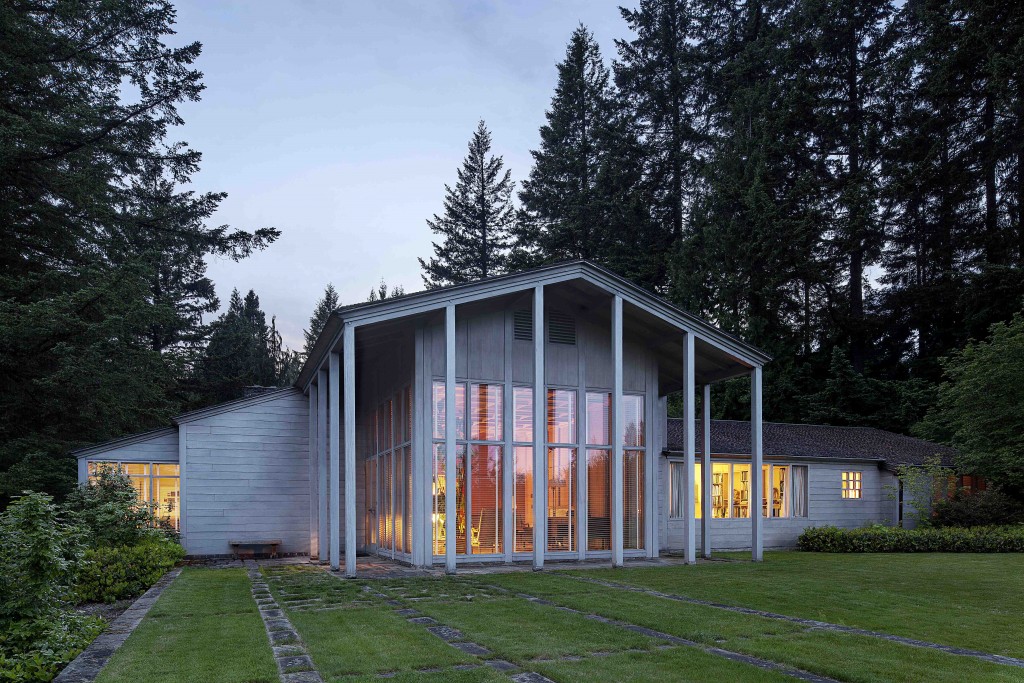
Watzek House Portland, OR
Try as you might, but you’ll be hard-pressed to find a nook or cranny in the Watzek House without wood. Designed by PNW-based architect John Yeon for lumber baron Aubrey Watzek and his wife, the Portland Hills residence is an ode to the owner’s most valuable resource. Inside, warm wood panels line the walls and ceilings while trimming adds dimension to the otherwise monolithic space. Although the interior is clearly a work of symmetrical mastery, we suggest looking to the façade for the structure’s defining feature: a series of dove gray columns that support the wood awning and cage the formal living room’s three walls of floor-to-ceiling windows. From the outside, the columns are evocative of a Greek pantheon but we like to think of it as a mid-century sanctuary. Distance viewing only.
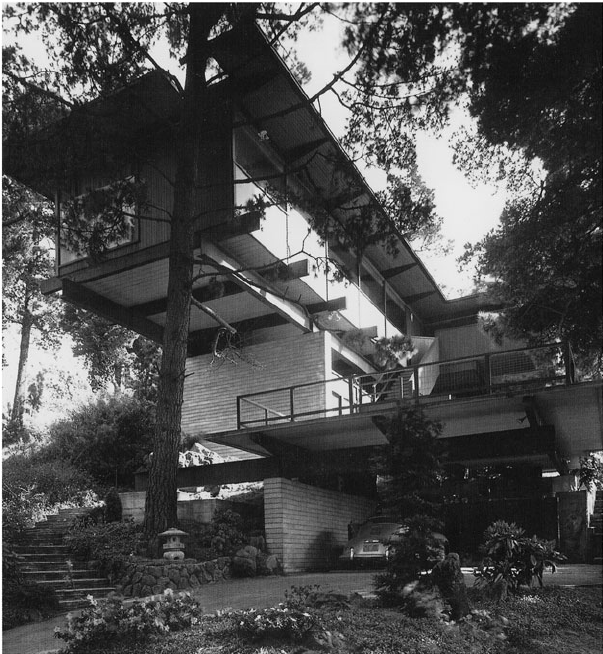
Heartwood House Oakland, CA
Tiny homes are all the rage these days, but this mid-century modern abode gives compact designers a run for their money. Once owned by jazz musician Dave Brubeck, the geometric Heartwood house is perched amid eucalyptus trees on a tight 50- by 100-square-foot site. Though its dimensions are small, the steel-structured home doesn’t minimize panoramic views of the San Francisco skyline and Golden Gate Bridge. Situated on a rocky outcropping that architect Beverley David Thorne described as “an impossible site,” the cantilevered home was designed to accommodate the Brubeck’s small budget and family of four. This is a home you have to see for yourself. Distance viewing only.
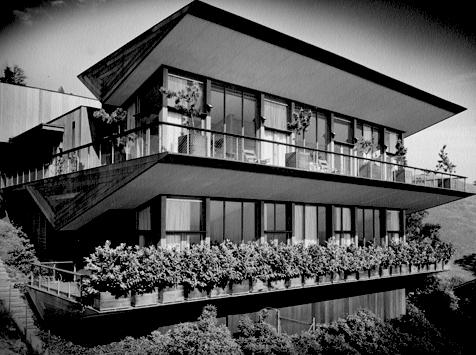
Havens House Berkeley, CA
Mid-century architect Weston Haven dreamed of designing a home with walls covered entirely with books or glass, and by 1944, he did just that. Built on a 35-degree slope and consisting of two main buildings—the upper and lower quarters—Havens House is outfitted with warm redwood walls and ceilings complemented with matching wooden bookshelves that line the living room and hallway walls. Even from a distance, there’s no way you can ignore the home’s three triangular trusses that jut out from the roof, main level, and lower floor. It’s a welcomed change from the right angles and boxy features found in most modern homes. Regular hours include guided tours, first Sunday of every month, 10:00 am, adults $20. Click here for more information.

Eames House Pacific Palisades, CA
What was once the primary residence of husband-and-wife designers Ray and Charles Eames is equal parts nature sanctuary and modernist masterpiece. Famed for their modern furniture and artwork, the duo put their multi-disciplinary touch on their 1949-built home. Just as Charles’ rule-bending La Fonda chair and Herman Miller pieces balance geometry with comfort, the Eames House is unique for its bright, angular design. The couple dreamed up an exterior composed of two glass and steel rectangular boxes paired with a façade of black-painted grids inlaid with alternating glass, gray Cemesto, and aluminum panels that reflect the adjoining eucalyptus grove. Inside, the symmetrical lines allow the Eames’ personal collection to shine: gifts, modernist sculptures, and souvenirs from the couple’s extensive travels are scattered among the hallways and living spaces. Insider tip: explore the extensive gardens which are equal parts innovative mid-century design and tranquil escape. Regular hours offer General Admission $10, 10:30 am – 4:00 pm, closed Wednesday and Sunday. Click here for more information.
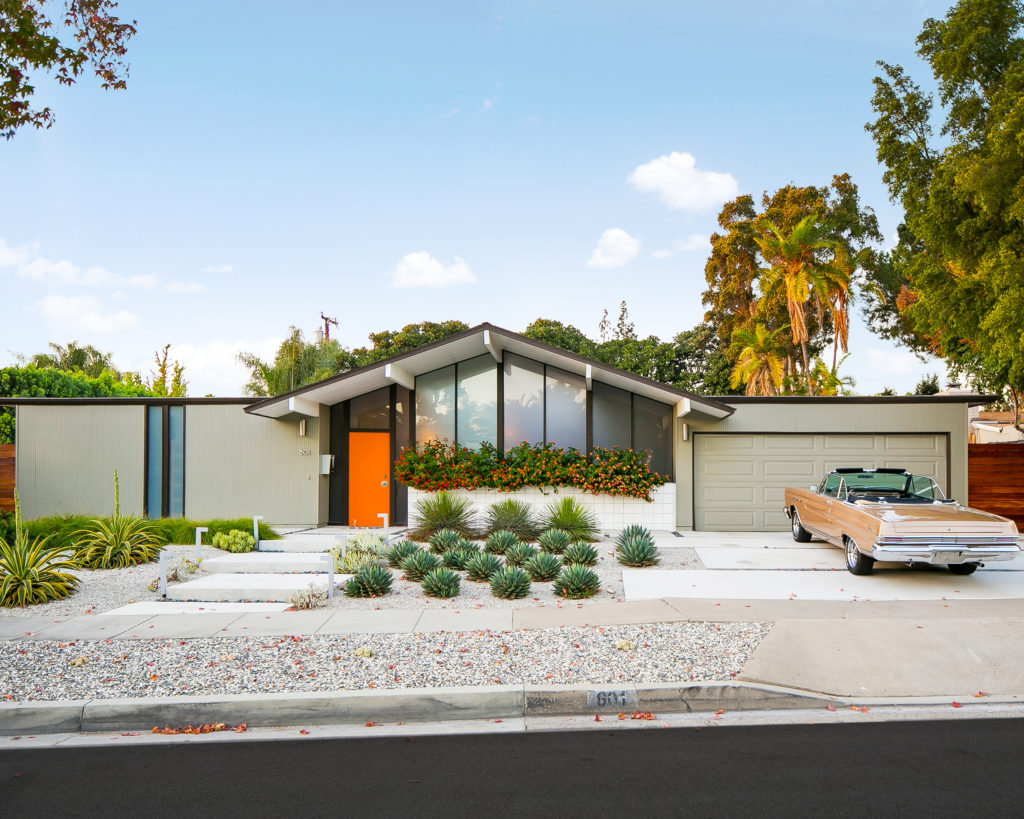
Eichler Homes Orange, CA
Californians all the way down the coast are no strangers to the work of Joseph Eichler, the mastermind behind more than 11,000 post-World War II modern homes and neighborhoods. A drive through one of these neighborhoods (we’re fans of the one in Orange, California) is a visual lesson in Eichler’s distinct style—flat and low-sloping A-frame roofs, floor-to-ceiling windows, and well-equipped for indoor-outdoor living. There are so many to look at, so take your pick! Distance viewing only.
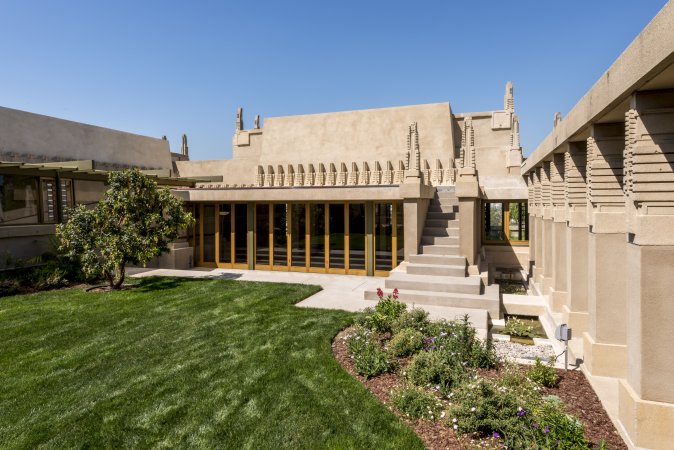
Hollyhock House East Hollywood, CA
Designed to meet heiress Aline Barnsdall’s request for a home that was “half house, half garden,” Frank Lloyd Wright created a cast-concrete structure that relies on numerous terraces, colonnades, and pergolas to blend the natural world with interior living. An extensive network of rooftop terraces offers views of Los Angeles and the home’s surrounding eleven (yes, you read that right) acres of gardens. Woven throughout the home’s design are stylized hollyhock flowers—Barnsdall’s favorite flower and an iteration of the indoor-outdoor theme. Regular hours offer docent tours by appointment. Click here for more details.
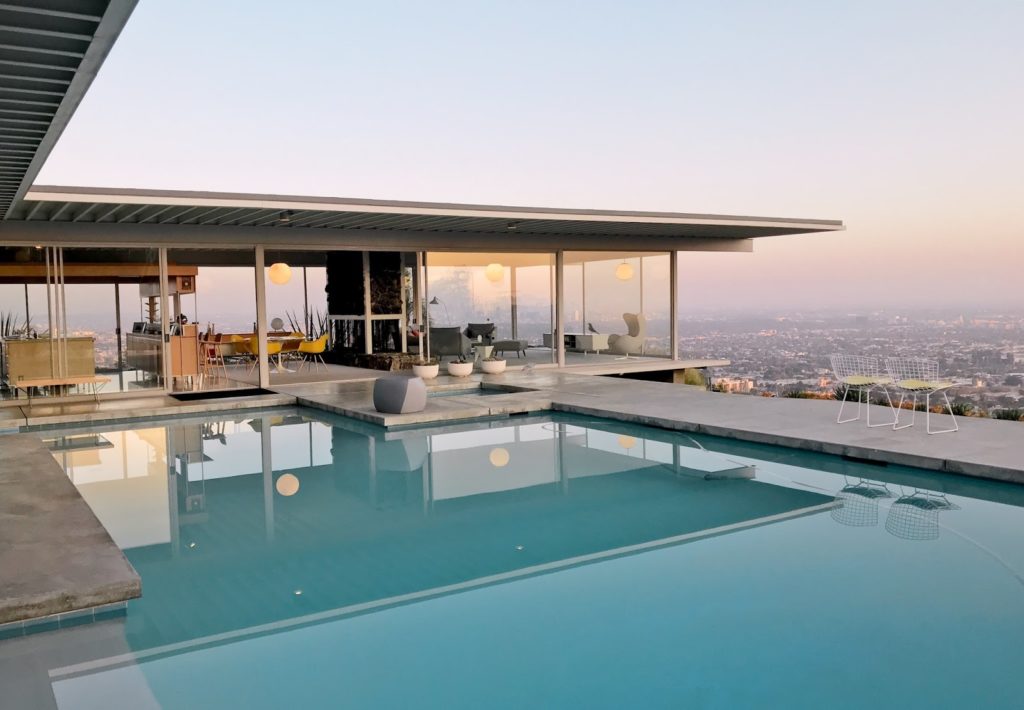
Stahl House Los Angeles, CA
If homes had personas, this one would be the starlet. A popular choice for fashion photoshoots and films, the Stahl House has become a prominent cultural backdrop for its stark, linear features, and abundance of natural light. Completed in 1960 for “Buck” Stahl and his wife Carlotta, the beauty of the LA skyline is undoubtedly the structure’s focal point—three of the walls are composed entirely of glass, held together by an unobtrusive steel structure. The home’s subtle drama is elevated by the rectangular swimming pool precariously placed on the edge of the cliff. Celebrity sightings not guaranteed. Regular hours offer tours with groups of two or more $35 per person, 9 am – 5 pm, closed Sunday and Monday. Visit their website for more information.
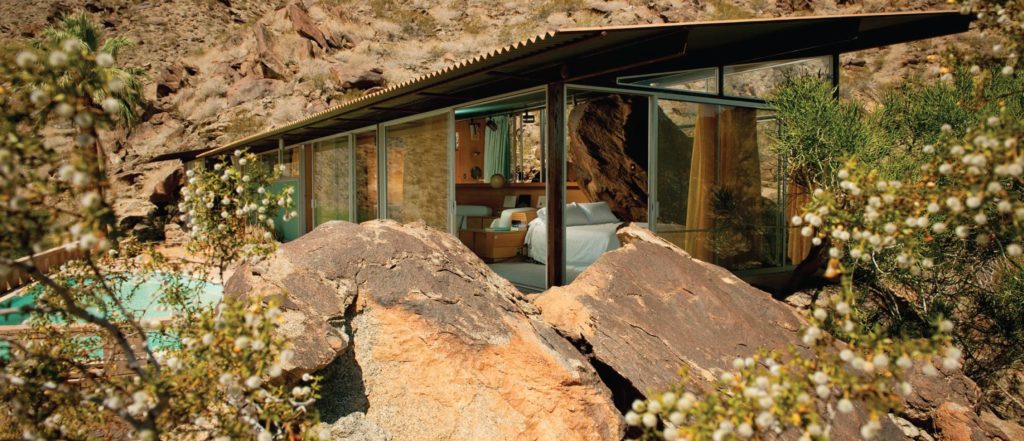
Frey House II Palm Springs, CA
An angular glass box nestled into the surrounding rock bed distinguishes the Frey House II’s delicate façade. Framed with a simple steel structure, the home is enclosed with large sheets of glass. A corrugated aluminum roof, originally painted cerulean blue to resemble the sky, and a marigold front door reflects the Coachella Valley’s desert hues. Incorporated into the design is a large boulder that serves as the dividing wall between the living room and bedroom. Designed by Albert Frey for himself in 1964, the 800-square-foot home is a perfect last stop on this tour de modernism. Docent tours by appointment. Click here for more details.
Some of the west coast’s most intriguing mid-century and modern homes are in your own backyard! Browse 360Modern’s Pacific Northwest listings and make an iconic architectural marvel your own.
